The "Humpback of EMD" in Tales of the Jointed Track
- Sept. 3, 2014, 11:35 a.m.
- |
- Public
The GP-30 was an odd looking duck. EMD produced many of a GP-30 roster. The Santa Fe had them, as well as Union Pacific, and they had GP-30’s and GP-30-B’s.. I see a glossary here. New York Central, B&O, the Rio Grande, CB&Q ( Burlington Northern) SOO Line, and the GM&O ( Gulf mobile and Ohio ). WOW and we have the Southern Railroad, L&N ( Louisville & Nashville) Reading Railway, Southern Pacific and the subsidiary SSW Cotton Belt. The Chicago and Northwestern (C&NW) owned some as well. There are some around still on the Class 1 railroads, and some that are at Railroad museums in static or operational display. Some are on short lines and the rest have gone to the scrappers torch. Even the Canadian Pacific had a few of these.
They were 2250 horsepower Turbo charged. The 567 diesel provided the output to the main generator that produced the electricity to 4 traction motors. Though its odd looking shape, it is classified as a GP or Geep (General Purpose) locomotive.
I have operated in freight service and switched in the yard or a local with these. I enjoyed a GP-30, but then again I entertain easily. I’ll enclose a few photos and make comments as needed.

A BNSF renumbered GP-30. Former Santa Fe, and the only addition is the “ditch light” requirement by the FRA ( Federal Railroad Administration) mandate
A former CB&Q GP-30. Right behind the cab is the air intake for combustion air and the traction motor blowers. The tapered part of the “hunchback” you can see the air intake and dynamic brake grids. Behind that on the roof line, are the shutters for the radiators. You can see the two cooling fans for the radiators. The dynamic brake fan a 36 in diameter is in between the cowling. The Burlington had a “Mars” light that could be activated, by the engineer for crossings and as an extra headlight at night. That is the top roof headlight(s) You could inch the light to line up with the main headlight, with a toggle switch. The bottom light in the top side of the Mars configuration, is a red lens. That activated during an emergency application, regardless on how it was initiated. You could activate that manually as needed.
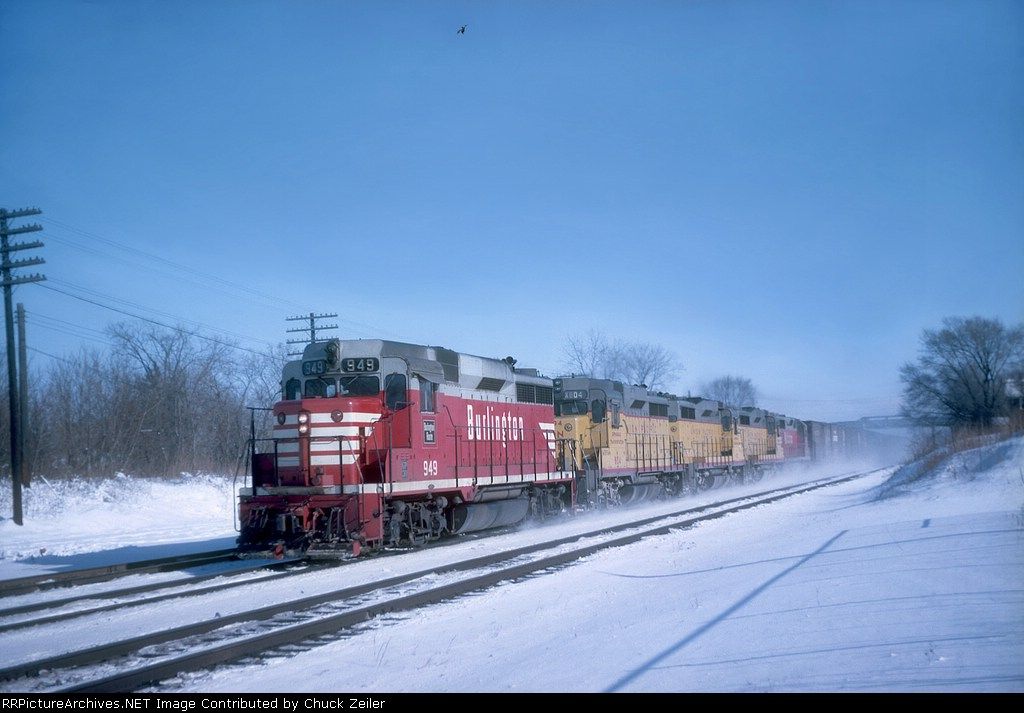
CB&Q Manifest at speed. Notice there are Union Pacific power pooled units GP-30’s as well. The rear Burlington unit? well the snow that is blowing, I cannot see the trucks. Looking at the roof line and cab..It may be a GP-40. Supposition on my part. If you look at the second unit, the UP GP-30 has the main headlight on top and not nose mounted. That is a railroad placement, per the mechanical department, on the order. Union Pacific did not use a Mars light configuration.
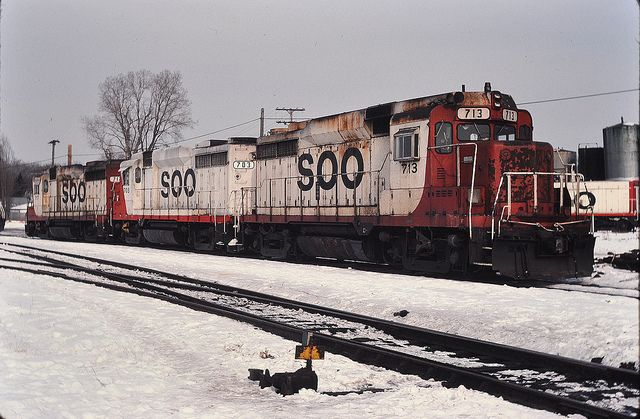
The SOO 713 has seen better day in this photo. Whats different in this photo, besides it is not Dynamic Brake equipped? Look at the trucks.. They are not the standard “Blomberg” equipped trucks. These units were ordered by the SOO and traded in some old ALCO ( American Locomotive Company) FA-1’s. They used the ALCO trucks and traction motors. GE (General Electric) supplied the traction motors and electrical equipment to AL:CO..
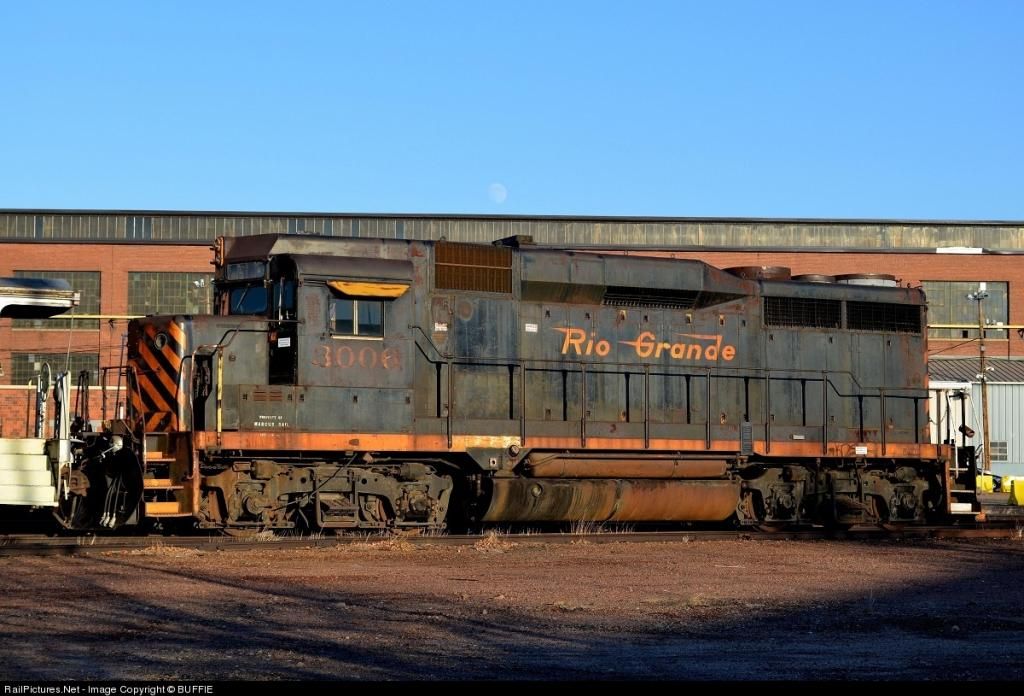
A sad old doll. :(( I probably have had this motor pass me on the Joint-Line countless times. This is the fireman’s side of the Locomotive. Toward the “rear” of the roof line you can see the three cooling fans.. The Dynamic braking grids are prominently displayed . The rusted screen grid is the air intake. Above that, you can see the exhaust stack. The Turbo, is directly below, inside the car body. In the old “RIO GRANDE” freight scheme, with the small speed lettering. The topside roof headlights were the standard. In the nose was the “Mars” light two white lensed headlights that would rotate or be static and in line with the static ones. The sweeping of the mars light at night..the Low toned Nathan chime whistle. A tone and a sound I always loved hearing. Although I never worked for the Rio Grande, I miss the Rio Grande. They are now Union Pacific …gag .. Did I say that out loud ? Sorry
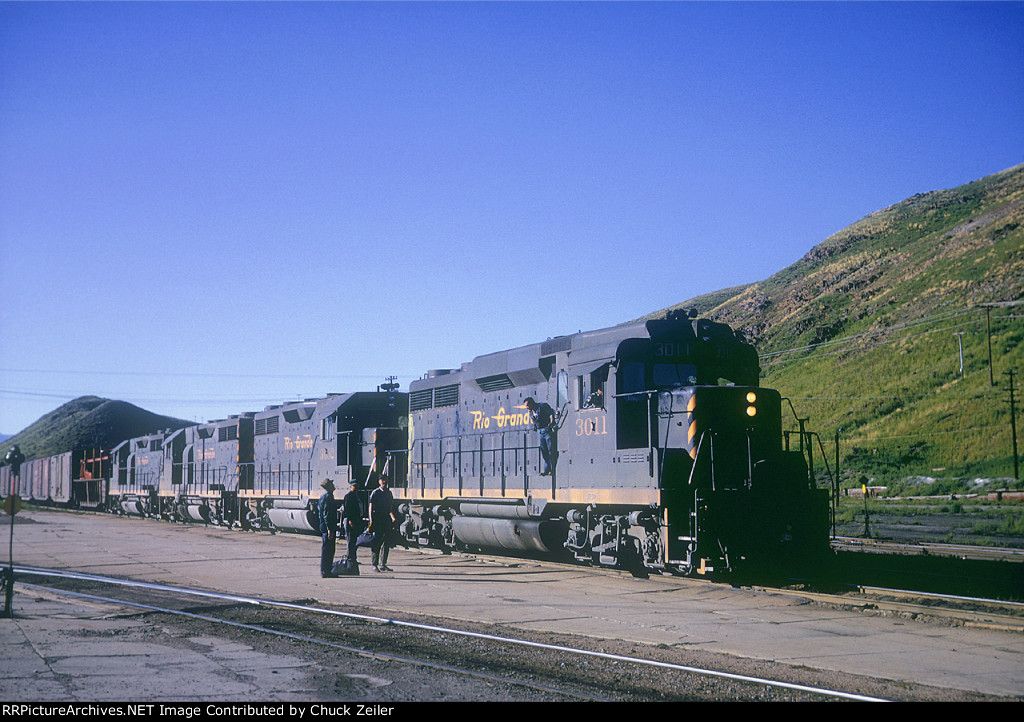
A Rio Grande GP-30 on the point at Minturn, CO. This is a standard crew change. A crew change that is performed 24/7 all over the continental US. looks like GP-40’s are behind the 3011. There will be a helper to boost them up the Tennessee Pass. They will cut out at Pando siding.
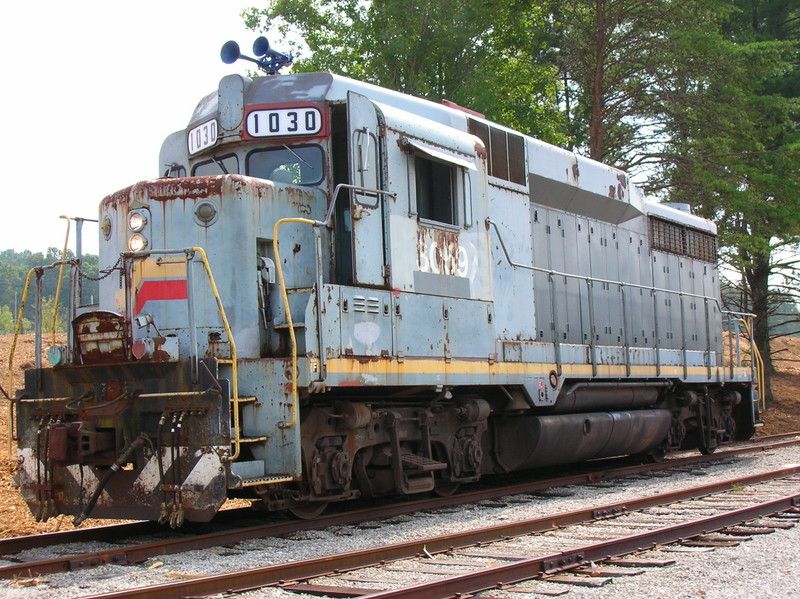
A former L&N (Louisville & Nashville) GP-30 You can see the “Blanked” Dynamic brake grids. This is Non Dynamic Brake equipped. Horsepower only.

A Union Pacific GP-30-B This is the “fireman’s” side of the locomotive. This can be a called a “Booster” or a “Cabless Booster”. You can see the the ratchet style handbrake. The other photo above is the engineers side of the B-Unit. Another road number, but a “B” Unit just the same.

KCS GP-30 ..Notice the KCS F-7 No. 90 The 90 has seen better days, and probably on its last days on the roster. 08/73 I am working for the BN in the shops right now. December 13th, 1973 I hired out in engine service with the Santa Fe.
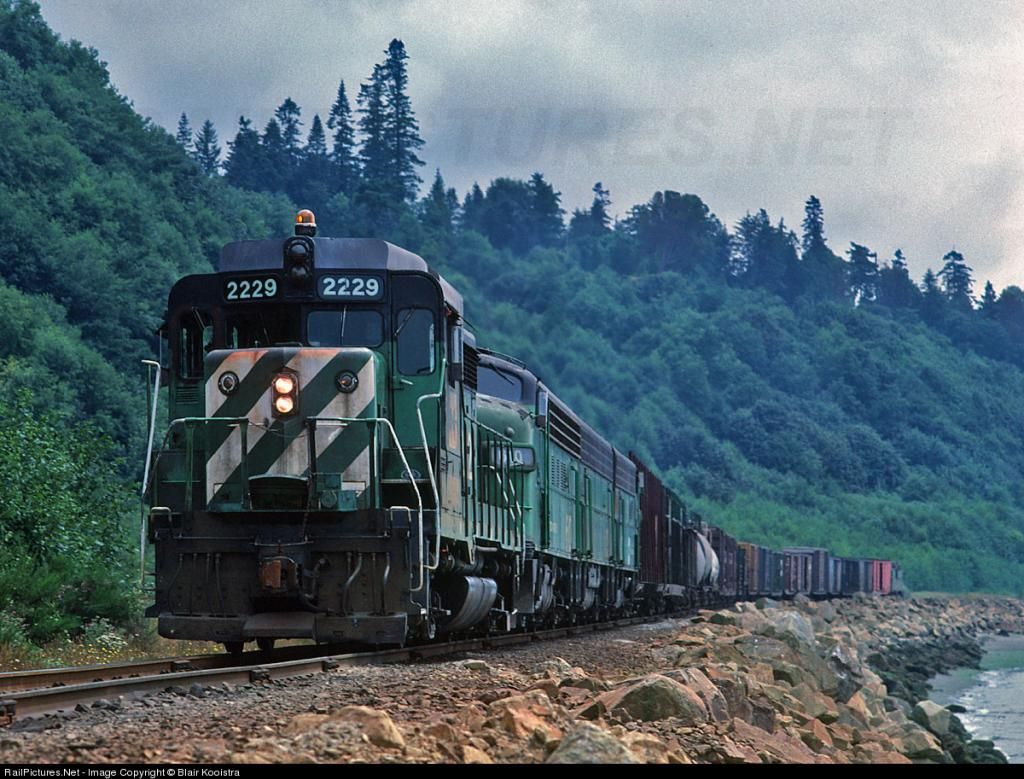
A local somewhere in Washington state. There is a A-B-A set of F’s behind it. The 2229 is a former CB&Q GP-30.

A Southern Railway “high hood” GP-30. The Lead part of the unit is the rear end. Southern operated this way for years. NS the merger of the Southern and the Norfolk Western, still operate this way. I would say that 90 percent of the roster is dual equipped for short hood or long hood forward operation. The “A” behind the road number on the side of the cab, is the service or assigned maintenance facility.
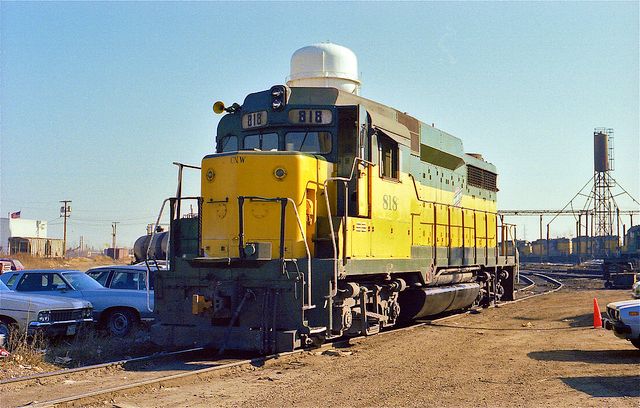
A C&NW GP-30.. Waiting for assignment, The “Hunchback” clearly shows the blanked area and is not dynamic brake equipped.
Are ya GP-30’ed out ???? Yeah me too… Thanks for reading.
Last updated September 03, 2014



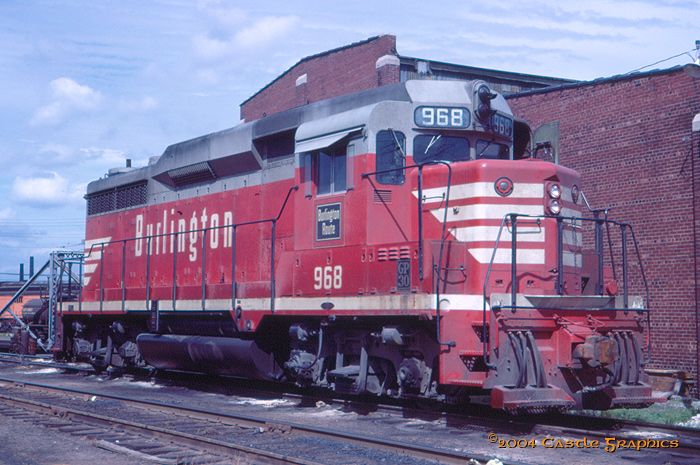


woman in the moon ⋅ September 04, 2014
Those are very cute locomotives.